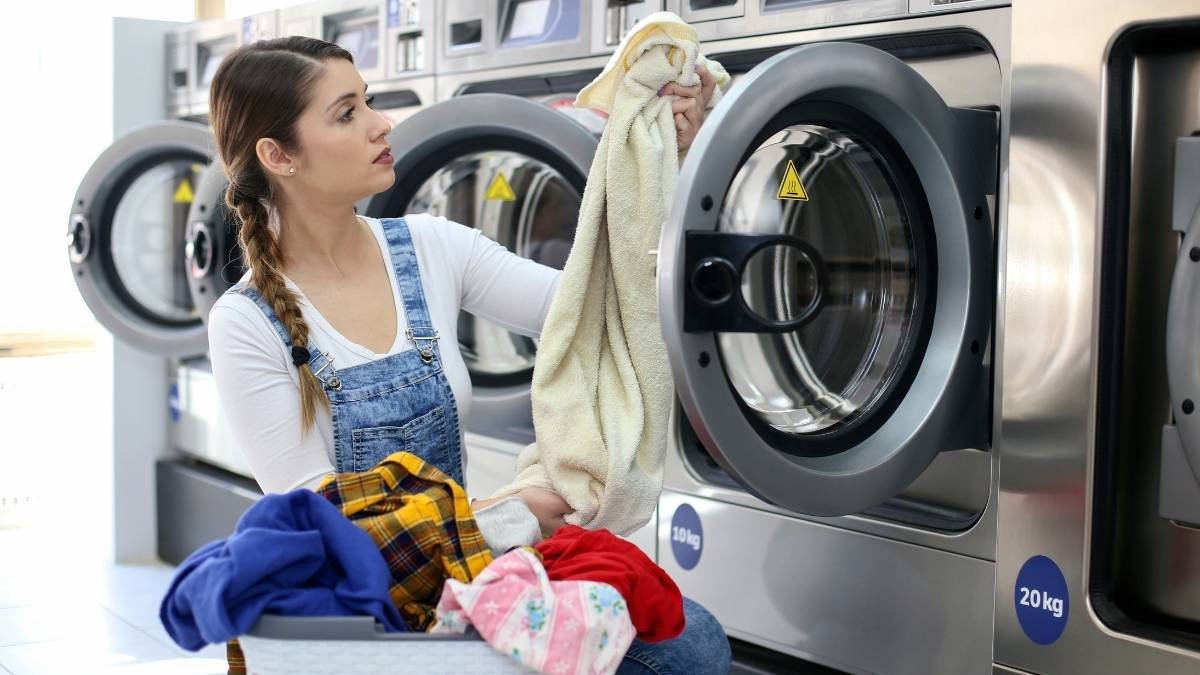
You pull your favorite sweater out of the dryer, and it looks like it went through a shrinking machine. Sound familiar?
Let’s have an honest conversation about laundry.
You know that pile of clothes sitting in your hamper right now? There’s a good chance you’re about to accidentally ruin some of them. And I’m not trying to scare you – I’m trying to save you money.
Here’s a stat that’ll blow your mind: 80% of Americans purposely overload their washing machines. Even worse? 93% of us mix items just to avoid doing a second load.
Guilty as charged? Yeah, me too.
But here’s the thing – professional cleaners are practically pulling their hair out watching us destroy our clothes with these “harmless” shortcuts. After diving deep into their world (and making every mistake in the book myself), I’ve got some eye-opening secrets to share.
Ready to stop accidentally sabotaging your wardrobe? Let’s dive in.
The Shocking Truth About Your Laundry Habits
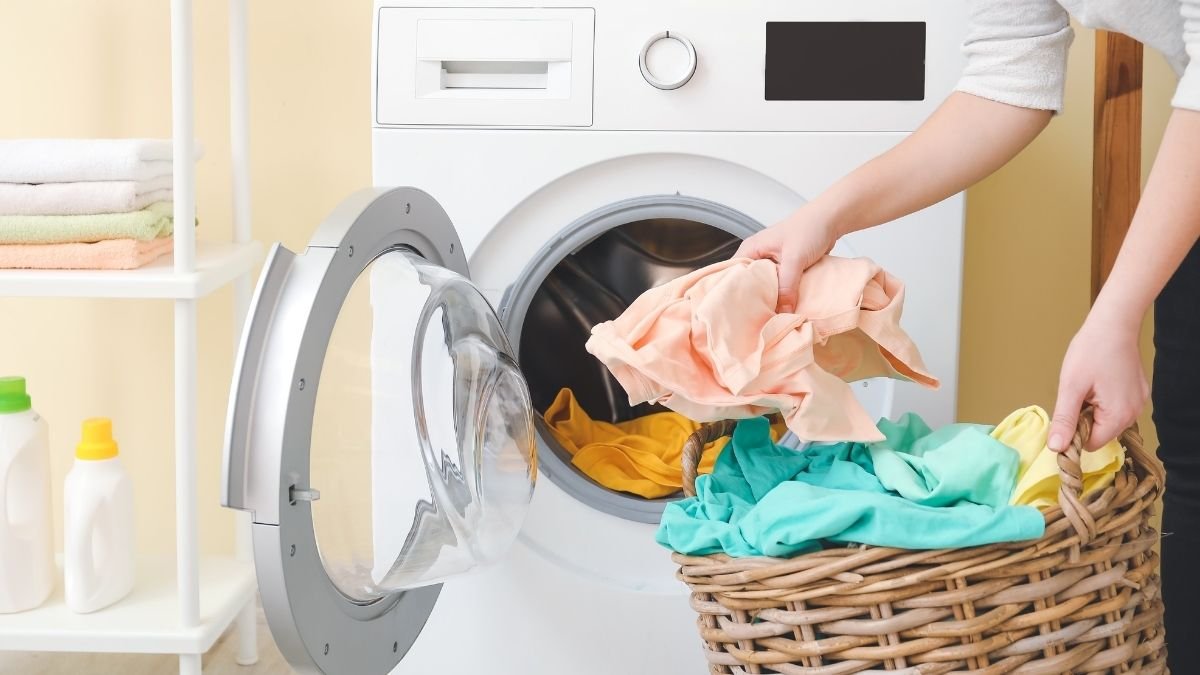
Before we get into the nitty-gritty, let me paint your expensive of our laundry laziness.
The average American owns 75-100+ pieces of clothing but wears each item only 7 times before tossing it.
Read that again. Seven times.
If you spent $2,000 on clothes this year (pretty normal for most households), and your washing habits are cutting their lifespan in half, you’re flushing $1,000 down the drain.
The U.S. generates 17 million tons of textile waste annually, with only 15% getting recycled. We’re not just destroying our clothes – we’re destroying our wallets and the planet.
But here’s the good news: most of this damage is preventable.
Mistake #1: The “More Soap = Cleaner Clothes” Disaster
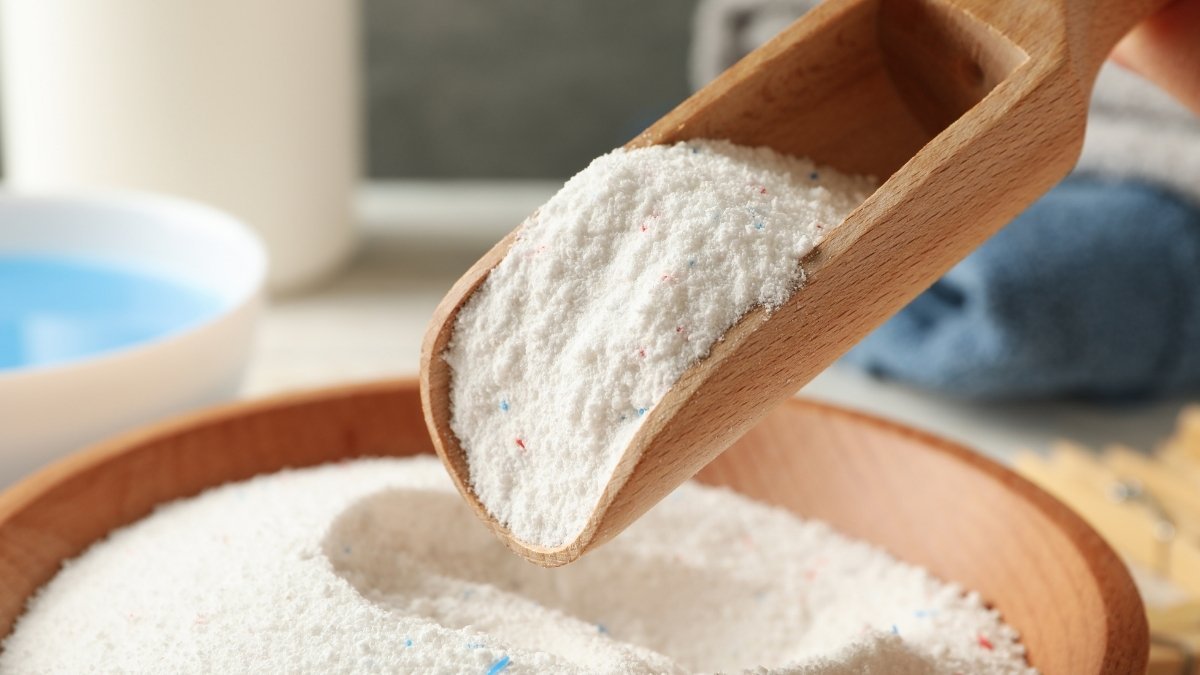
Raise your hand if you’ve ever thought, “A little extra detergent can’t hurt.”
Oh, honey, I hate to break it to you, but this is the worst thing you can do, according to laundry expert Richardson.
What’s Happening in Your Washer
When you use too much detergent, you’re not getting cleaner clothes. You’re creating a soap disaster:
- Excess suds trap dirt instead of washing it away
- Residue builds up on your clothes, making them feel stiff and look dull
- Bacteria start growing in the soap buildup (gross, right?)
- Your clothes get dirtier faster because the residue acts like a dirt magnet
The Professional Fix
Start with half the amount you normally use. Seriously.
One professional cleaner told me she had to use white vinegar to restore clothes that had been destroyed by soap buildup. Her clothes felt softer after cutting back on detergent!
Pro tip: If your clothes aren’t getting clean with less detergent, the problem isn’t the amount – it’s probably your water temperature or load size.
Mistake #2: The Temperature Trap That’s Shrinking Your Wardrobe
The Ultimate Water Temperature Guide
COLD
WARM
HOT
Annual Energy Cost Comparison (300 loads)
Let’s talk about hot water for a second.
I get it – hot water feels like it should clean better. It’s hotter, therefore stronger, right?
Wrong.
Hot water is shrinking, fading, and damaging your clothes while you think you’re giving them the deep clean treatment.
The Temperature Guide That’ll Save Your Clothes
Cold Water (30°C and below):
- Perfect for: Colors, delicates, lightly soiled items
- Prevents: Shrinking, bleeding, fabric damage
- Bonus: Saves 90% of your washing machine’s energy costs
Warm Water:
- Use for: Dirty clothes and whites
- When you need: Extra cleaning power for real stains
Hot Water:
- Only for: Sanitizing underwear, towels, and very soiled items
- Warning: Can permanently damage most modern fabrics
Here’s something that surprised me: Professional dry cleaners are seeing 7.5% growth because people finally realize their quality clothes need special care to last longer.
Don’t let heat destroy what could have lasted years.
Mistake #3: The Overloading Epidemic That’s Beating Your Clothes to Death
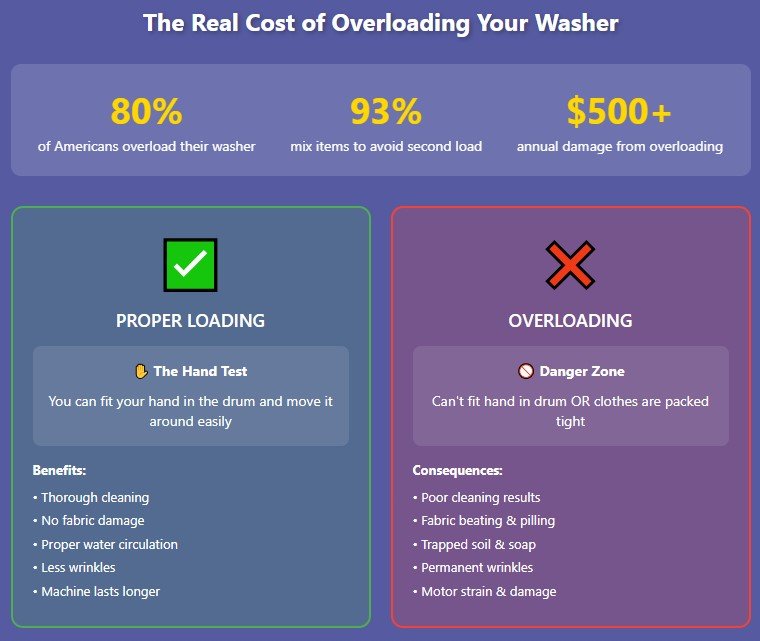
Remember that 80% overloading statistic? Yeah, we need to talk about this.
What Overloading Does to Your Clothes

When you cram everything in there, you’re not just being efficient. You’re literally:
- Beating your clothes against each other, causing pilling and breakdown
- Preventing proper water circulation, so soap and dirt get trapped
- Straining your machine’s motor (hello, expensive repairs!)
- Creating wrinkles that are nearly impossible to get out of
The Simple Professional Test
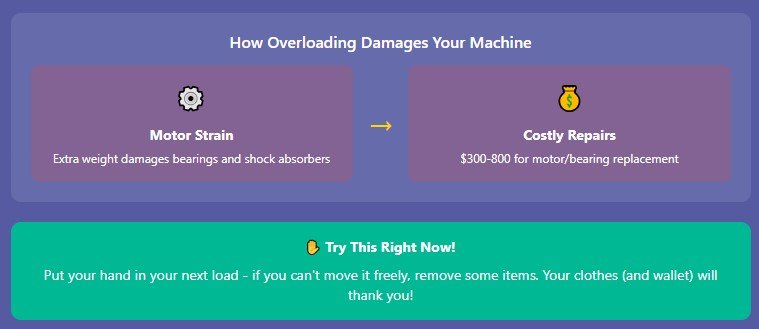
Here’s how to know if you’re overloading:
Put your hand in the drum with the clothes. Can you move it around easily? If not, you’re cramming too much in there.
I started doing this test and was shocked at how much I was stuffing in. No wonder my clothes came out looking like crumpled disasters!
Mistake #4: The Care Label Rebellion (That’s Costing You Big Time)
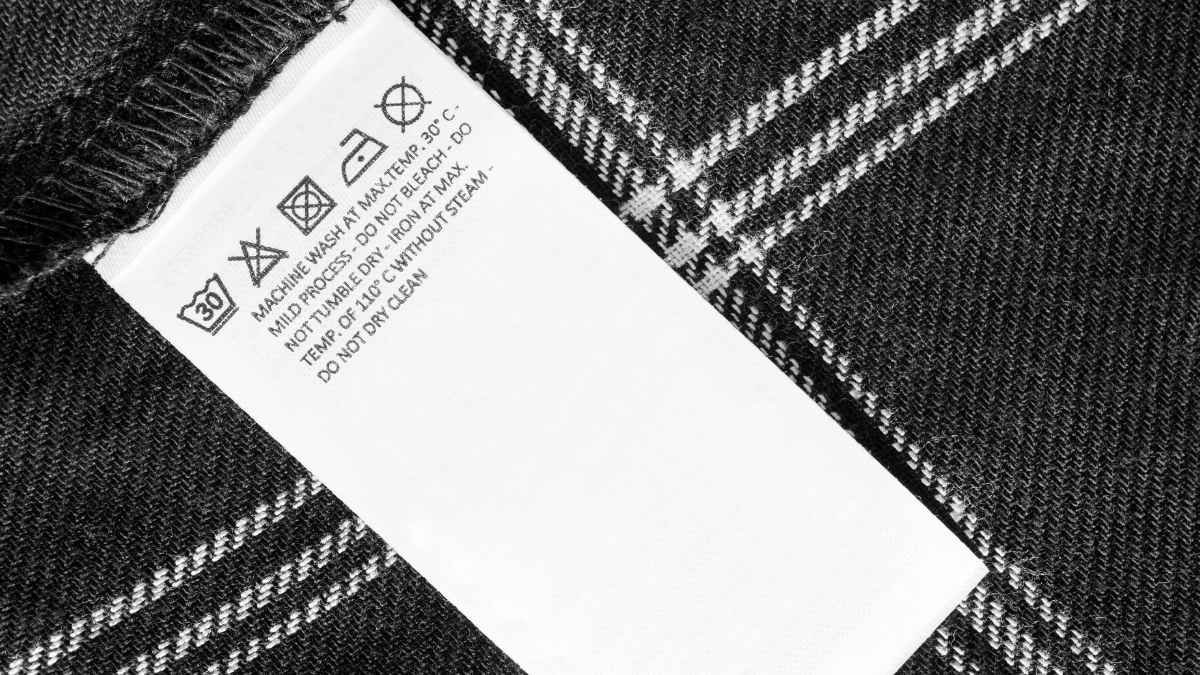
Confession time: I used to cut off care labels because they were itchy.
Turns out, I was throwing away the instruction manual for keeping my clothes beautiful. Facepalm.
Why Care Labels Are Your Clothes’ Best Friend
Every single garment comes with specific instructions for:
- Water temperature
- Drying method
- Bleach compatibility
- Special handling needs
Ignoring these isn’t just risky – it’s expensive.
The Most Costly Care Label Mistakes
“Dry Clean Only” items in your washer = Instant fabric destruction and shrinkage
Using bleach on “No Bleach” fabrics = Permanent holes and discoloration
Hot drying delicates = Melted synthetic fibers and destroyed elastic
Professional cleaners see these disasters daily. Don’t let your favorite pieces become their cautionary tales.
Mistake #5: The Timing Disasters We’re All Making
The Timeline of Forgotten Laundry
What Happens When You Leave Clothes in the Washer
HRS
HRS
HRS
HRS
Hidden Costs of Bad Timing
Machine Type Matters
Front-Loading
- Sealed door traps moisture
- Creates perfect mildew environment
- Musty smell develops faster
- Maximum safe time: 4-6 hours
Top-Loading
- Better air circulation
- Less moisture buildup
- Slower odor development
- Maximum safe time: 8-12 hours
Professional cleaner Christen Jeziorski dropped this truth bomb: “Forgetting the wash in the washer is one of the most common mistakes I see.”
What Happens When You Leave Clothes in the Washer
Short-term (a few hours): Usually fine, no big deal
Overnight: Starting to get risky
Longer than 24 hours: Welcome to Musty Town, population: your clothes
Front-loading machines are especially bad for this. The damp environment creates that funky smell that requires rewashing everything.
The Simple Fix
Set a phone timer for every wash cycle.
It’s so simple, but it’ll save you time, detergent, water, electricity, and that awful smell that never quite goes away.
Mistake #6: Waiting to Treat Stains (The 24-Hour Rule That Changes Everything)
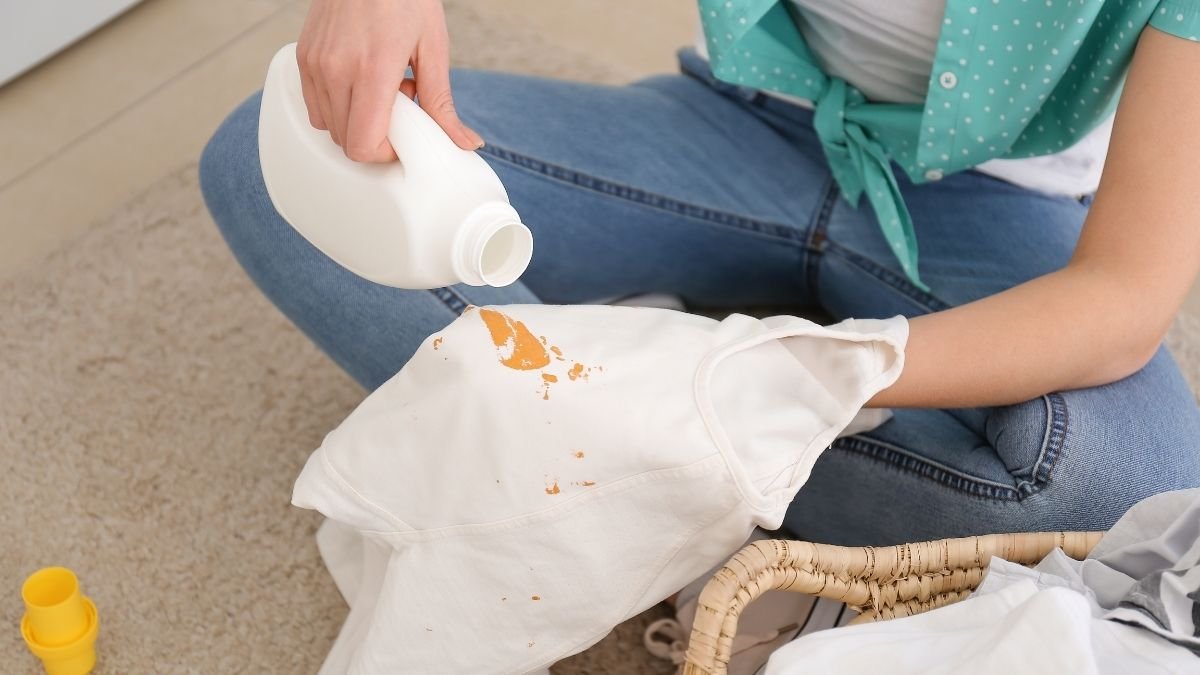
“Treat the spot immediately! The sooner you attack the spot, the easier it is to remove.” – American Cleaning Institute
Yet most of us spot the stain, think “I’ll deal with that on laundry day,” and seal its fate forever.
Why Timing Matters So Much
Within hours: Stain comes out easily
After 24 hours: The Stain starts setting permanently
After several days, you might as well name that stain, because it’s staying
Professional Stain-Fighting Secrets
- Never rub or scrub – you’ll damage the fabric and spread the stain
- Work from outside to inside to prevent spreading
- Use white cloths only, so colors don’t transfer
- Test on hidden areas first to avoid creating new problems
The pros have seen too many favorite shirts ruined by aggressive scrubbing. Gentle is the way to go.
Mistake #7: The Sorting Shortcuts That Are Costing You a Fortune
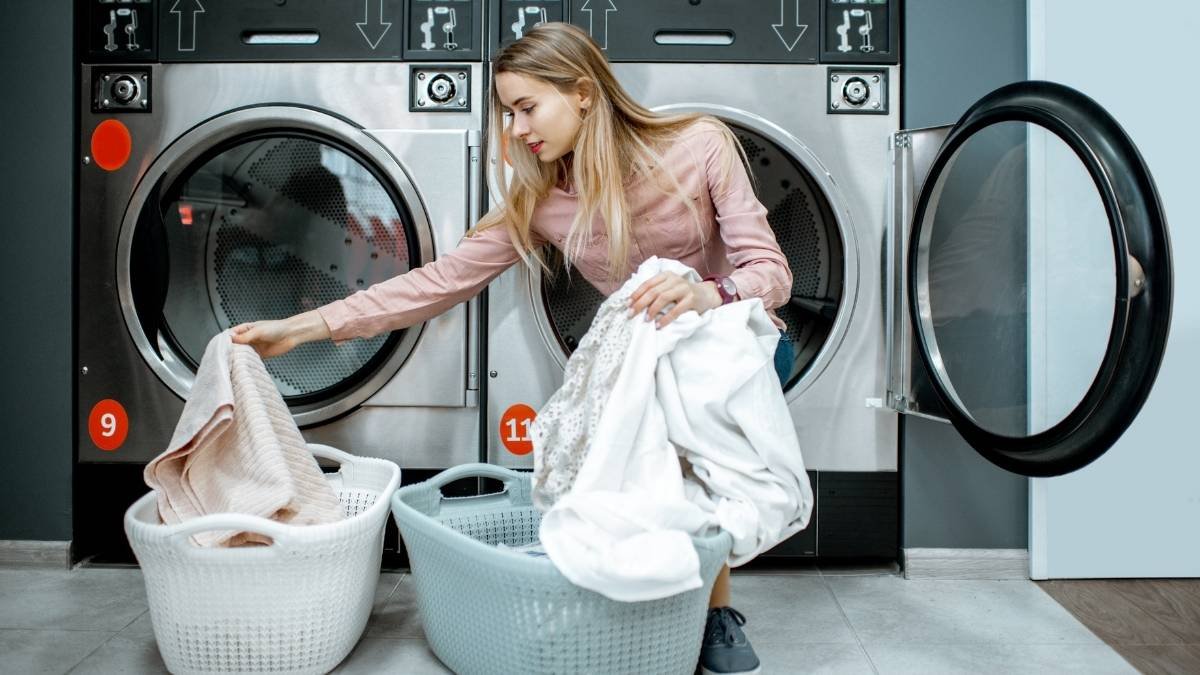
I used to think sorting was just about keeping whites white.
Professional cleaners had a good laugh at my oversimplification.
The Real Reason to Sort (It’s Not What You Think)
“Sorting is going to make the clothes look better and last longer,” says expert Richardson.
But it’s not just about colors. Here’s what the pros actually sort by:
Fabric weight – Heavy jeans beat up delicate blouses
Soil level – Super dirty clothes make everything else dingy
Care requirements – Similar temperatures and cycles together
The Advanced Sorting That Saves Money
Dry lightweight clothes separately from heavy items like jeans and jackets.
Why? Delicate fabrics spend too long in the dryer when mixed with heavy items, leading to damage and overwashing.
This one tip alone can double the life of your t-shirts and blouses.
Mistake #8: The Fabric Softener Trap That’s Ruining Your Workout Clothes
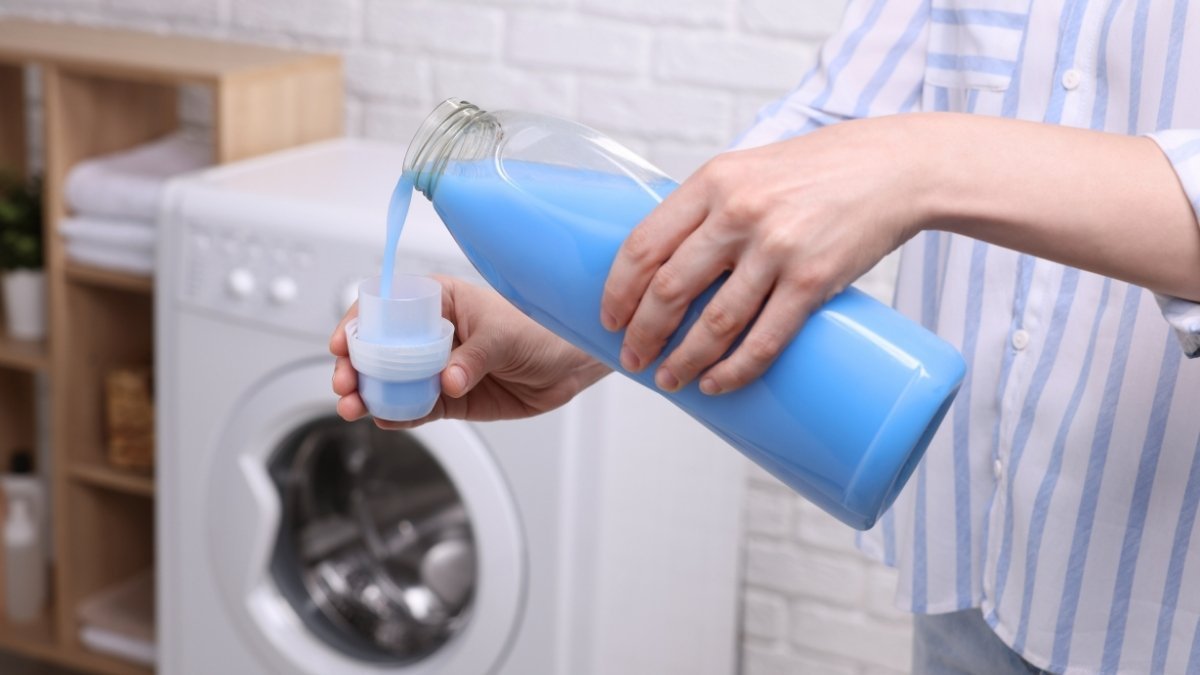
This mistake got me.
I was religiously using fabric softener on everything, thinking I was being nice to my clothes.
Turns out, I was destroying my athletic wear.
What Fabric Softener Does
That soft feeling? It’s from a coating that clogs fabric fibers.
For athletic wear, this means:
- Moisture-wicking stops working
- Breathability disappears
- Dirt gets trapped more easily
- Performance properties are lost forever
Professional Alternatives That Work
Dryer balls: Soften clothes, reduce static, and cut drying time by 40%
White vinegar in rinse cycle: Natural softening without residue
Skip it entirely: Many fabrics don’t need softening
Your workout clothes will thank you.
Mistake #9: The Machine Maintenance Mistake That Sabotages Every Load

When was the last time you cleaned your washing machine?
Crickets chirping
Yeah, I thought so.
What’s Growing in Your “Clean” Machine
Over time, your washer becomes a breeding ground for:
- Detergent residue
- Fabric softener buildup
- Soap scum
- Mold and mildew
- Bacteria colonies
All of this gets transferred back onto your “clean” clothes. Yuck.
The Monthly Deep Clean Protocol
DIY version: 2 cups white vinegar + 1/2 cup baking soda, run hot cycle
Store-bought: Use washing machine cleaner monthly
Don’t forget: Wipe down seals and leave the door open to air dry
Your clothes will smell better, look cleaner, and your machine will last longer.
Mistake #10: The Hardware Hazards That Are Shredding Your Wardrobe
The Hidden Hardware Weapons Attacking Your Clothes
Hardware Damage: The Hidden Clothing Killer
The Hardware Hall of Destruction
The Right Way vs. The Disaster Way
PROPER HARDWARE PREP
LAZY TOSS-IN METHOD
The Pocket Disaster Hall of Fame
30-Second Professional Prep Checklist
Annual Cost: Proper Prep vs. Lazy Toss-in
This one changed my entire laundry prep routine.
Metal zippers and hardware are eating your other clothes during the wash cycle.
The Prep That Prevents Disasters
Zip everything to the top – Open zippers, snag, and tear other fabrics
Unbutton everything – Buttoned items stress the fabric and hardware
Turn damage-prone items inside out – Jeans, leggings, and dark colors last longer
Empty every pocket – This prevents 90% of laundry disasters
I found a pen in my pocket after it had been through a full wash cycle. The entire load was ruined. Don’t be me.
Mistake #11: The Frequency Fallacy That’s Wearing Out Your Wardrobe
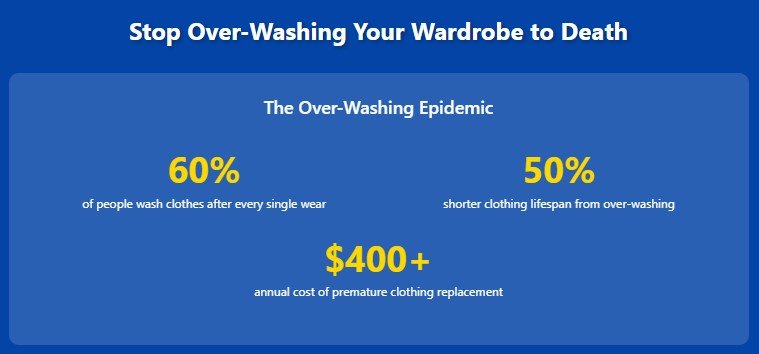
Here’s something that might surprise you: you’re probably washing your clothes too often.
How Often Should You Wash Things?
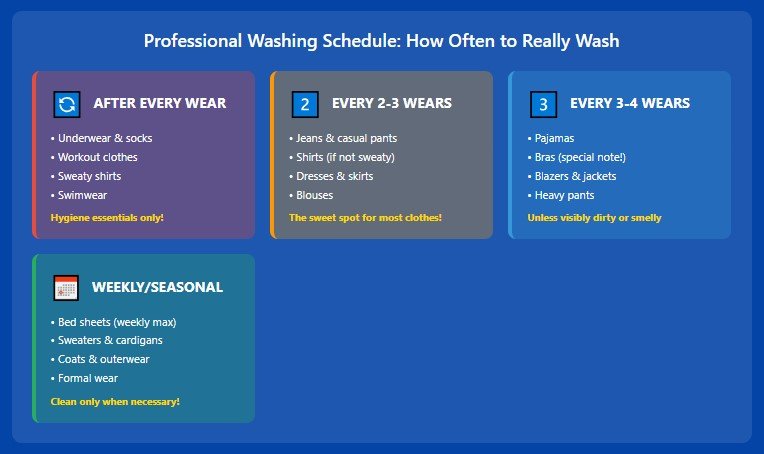
After every wear:
- Underwear and socks
- Workout clothes
- Sweaty shirts
Every 2-3 wears:
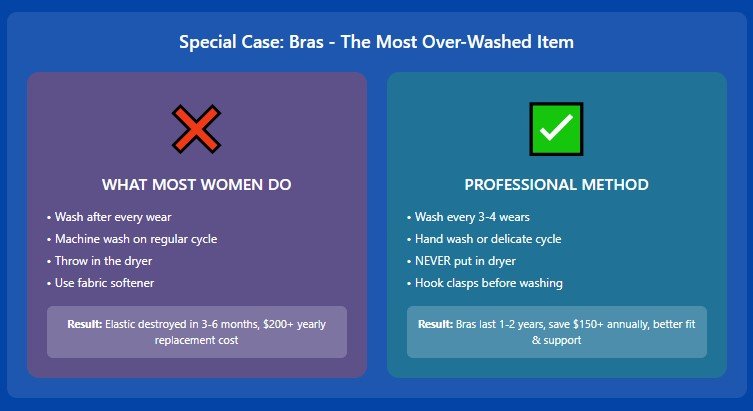
- Jeans and casual pants
- Shirts and dresses (if not sweaty)
Every 3-4 wears:

- Pajamas
Weekly (max 2 weeks):

- Bed sheets
Monthly or seasonally:
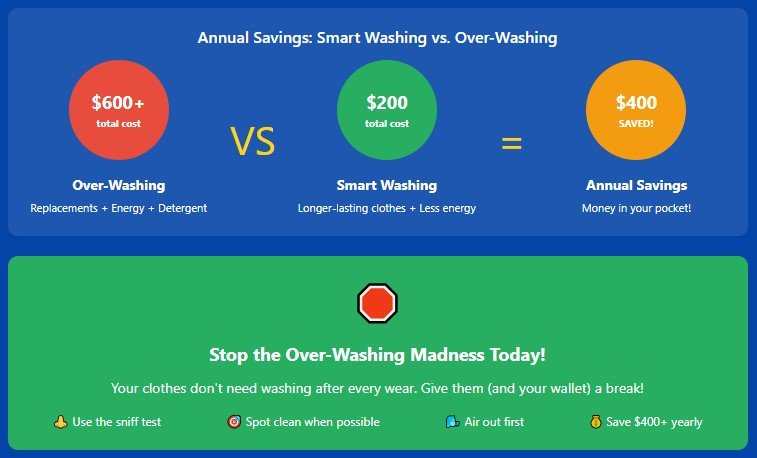
- Jackets, coats, sweaters (unless stained)
Special note on bras: Wash every 3 wears and never put them in the dryer. Heat destroys the elasticity forever.
The Real Cost of Getting This Wrong
Here’s the economic reality that’ll make you rethink everything:
The U.S. dry-cleaning and laundry services market is worth $9.8 billion and growing at 6.6% annually. Why? Because people are realizing their clothes need proper care to last.
Meanwhile, customers are doing fewer loads due to economic pressure, but they’re doing them wrong, which costs more through damaged clothes and rewashing.
The environmental cost is staggering, too: up to 700,000 microscopic fibers get released into our oceans every time we wash synthetic clothes.
Your 30-Day Wardrobe Transformation Challenge
30-Day Wardrobe Transformation Challenge
Transform Your Laundry Game & Save $500+ This Year
Your Week-by-Week Action Plan
11 Deadly Mistakes You’ll Eliminate
Your 30-Day Results
Your Annual Savings Breakdown
Quick Reference: The Golden Rules
Ready to stop destroying your clothes? Here’s your week-by-week action plan:
Week 1: Foundation Changes
- Cut the detergent in half and test the results
- Set timers for every wash cycle
- Practice the one-hand test for load sizes
Week 2: Temperature and Care Revolution
- Switch 80% of loads to cold water
- Read care labels (I know, revolutionary)
- Clean your washing machine
Week 3: The Sorting and Prep Game-Changer
- Sort by fabric weight and care needs
- Zip, unbutton, and turn inside out before washing
- Create a pocket-checking routine
Week 4: Timing and Frequency Master
- Air-dry 50% of your clothes
- Treat stains immediately
- Reduce washing frequency on appropriate items
The Bottom Line: Your Clothes Are Investments
Professional cleaners see the same preventable mistakes destroying clothes every single day.
Your clothes aren’t just fabric – they’re investments. With global spending on clothing hitting $2.9 trillion by 2029, isn’t it time we learned to protect those investments?
The next time you’re standing in front of your washing machine, remember: every load is either extending your clothes’ life or accidentally destroying them.
Professional cleaners have given us the roadmap. Now it’s up to us to follow it.
Your wallet will thank you. Your wardrobe will thank you. And honestly? You’ll thank yourself every time you put on a shirt that still looks and feels amazing after months of proper care.
What’s the biggest laundry mistake you’ve been making? Drop a comment below – I bet you’re not alone! And if this saved you from a laundry disaster, share it with a friend who needs to see this. We’ve all been there, and we can all do better.
Ready to become a laundry pro? Start with just one tip from this list and watch the difference it makes. Your future self will definitely thank you.






